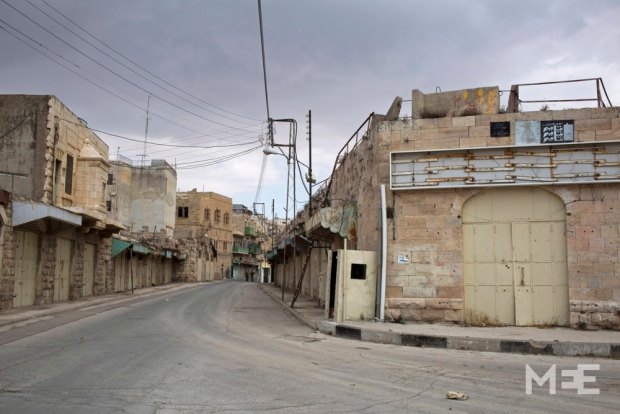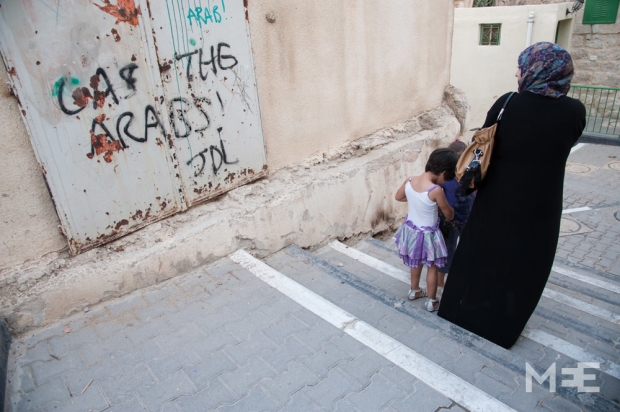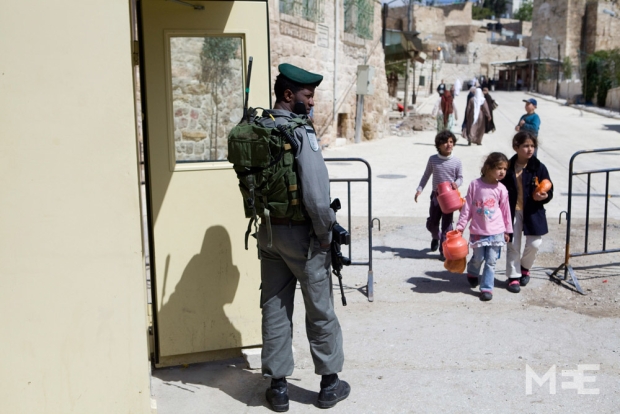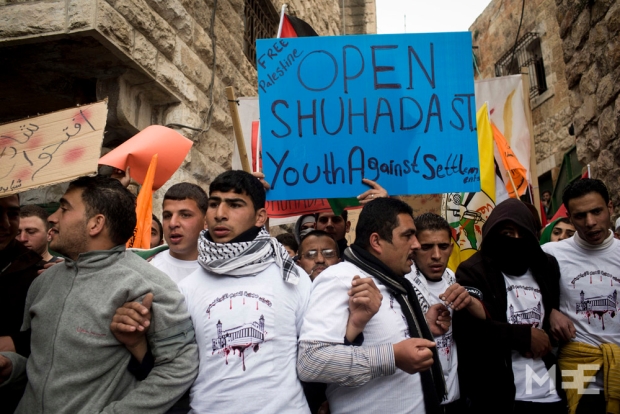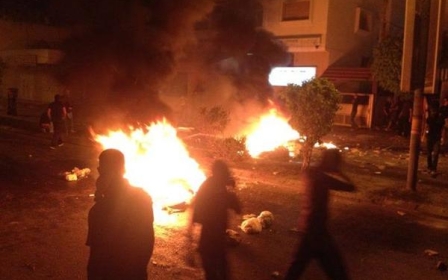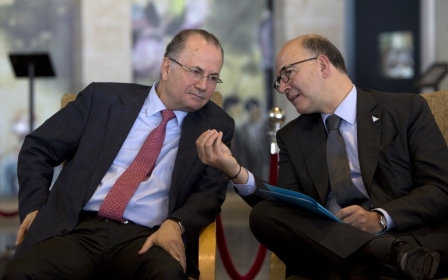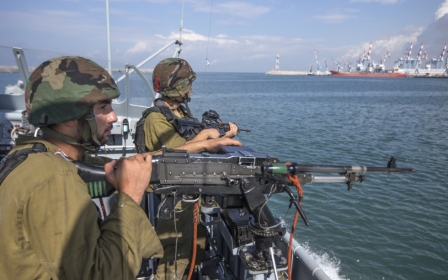The Palestinian struggle to remain in Hebron
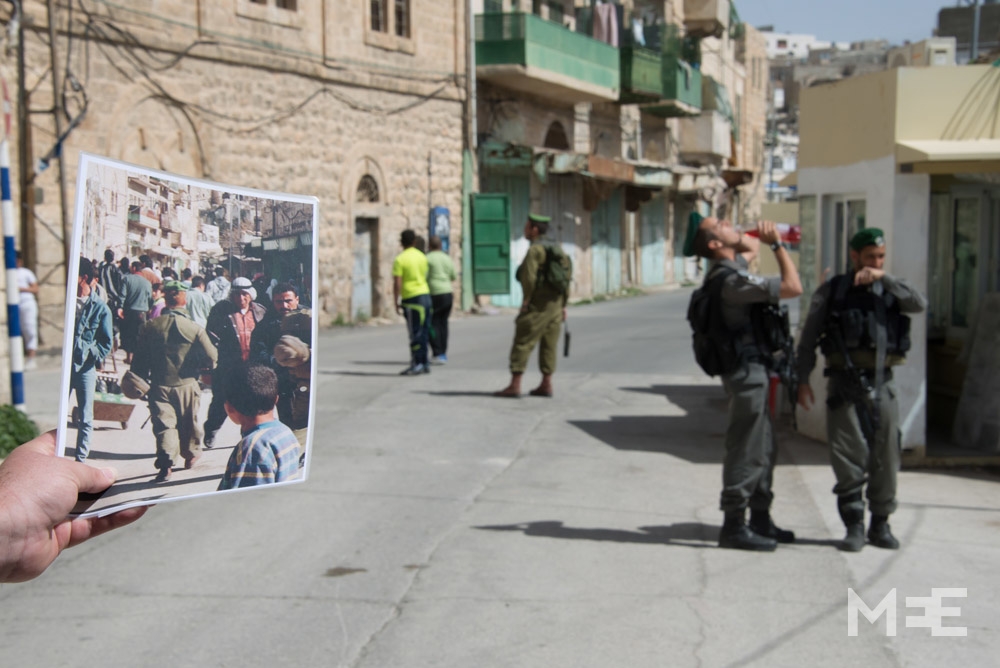
HEBRON, West Bank - At 52, Hashem al-Azzeh has seen many changes in his home city of al-Khalil, the Arabic name Palestinian locals use to refer to Hebron. He remembers the bus station at the heart of the old town and the busy vegetable market on Shuhada Street. Decades ago, it was the city’s main artery, a road packed with stores and shoppers, home to hundreds of families and a central point of the community for many more.
Now, however, much of Shuhada Street is deserted. In the middle of Azzeh’s neighbourhood, there’s an invisible line where a solitary Israeli soldier stands in a khaki beret. It’s a line Azzeh is forbidden to cross, the beginning of the long stretch of city where all Palestinian traffic is prohibited.
Foreigners and Israelis, however, are free to walk the whole length of the street. Dust coloured, it’s lined with shuttered stores with awnings hanging awry, bleached by sun; halfway down, the street splits, but both arterial roads are so abandoned that they appear to lead to nowhere. The only people present are Israeli settlers: a small boy chats to a soldier, and a solitary jogger repeats truncated laps between the military posts.
“It’s a ghost town, a ghost city,” Hashem says. “The Palestinians become crazy from this situation. In order to get to your house, you need a permit, you need all your baggage checked. You can’t drive a car. There’s no clinic, no ambulance. You are harassed by soldiers all the time.
Closures and division have been a defining feature of life in Hebron since the late 1970s. Then, Beit Hadassah on Shuhada Street, which had historically functioned as a hospital, a dairy factory and an UNRWA school, was taken over by Israeli settlers, and military checkpoints were set up around the building. Three years later another settlement was established close by, adding more apartments and houses to a Jewish community that now includes a museum, community centre and Yeshiva. The closures increased – another step in what Azzeh’ regards as a gradual closing down of freedom of movement for Palestinians in the city.
The settlers did not come from nowhere: Beit Hadassah, and other areas of the city, was built and inhabited by Hebron’s Jewish community long before 1948. During the 1920s and 30s, however, simmering tensions across Palestine exploded into local riots and dozens of Jews were killed by Palestinian rioters in the city; several years later, the remaining population was evacuated. The settlers – who tend to be religious and politically right-wing – regard their arrival in Hebron as a rightful return to Jewish property that was taken from them by force in relatively recent history.
For the Palestinian majority of the city, however, the reality of the settlers’ arrival has meant the destruction of a community. Hebron is now divided into two areas: H1, controlled by the Palestinian Authority and covering about 80 percent of the city, and H2, in the old city, home to 30,000 Palestinians and 500 Israeli settlers and under Israeli military control. It's here that closures, militarisation and deep, often violent tension bites most. Only Palestinians with correct permits are able to cross Checkpoint 56, which separates H1 and H2, and they’re not permitted to drive there even as settlers cruise past freely in upmarket cars. Home raids, arrests and interrogations – including of children – are an everyday occurrence. Harassment and even violent attacks from soldiers and settlers are reported frequently to the many international organisations that monitor the situation in the city.
Just outside the store, 80-year-old Mohammed Abu Ayyash is struggling to his home uphill from the checkpoint – a steep slope that, despite his age and the stick he walks with, he has no choice but to climb.
“They have cars, but it's not allowed for us to drive a car,” he says. “When they put up the checkpoint, I asked them what I should do with my car. They said sell it, and buy a donkey. But they wouldn't let me bring a donkey past the checkpoint anyway!”
The major turning point in the current regime of closures took place more than twenty years ago in 1994, when extremist settler Baruch Goldstein killed 29 Palestinians in Hebron’s Ibrahimi Mosque. Despite the fact that Palestinians were the victims of the massacre, Israeli military responded by imposing a two-week curfew on all the Palestinians in the city, and shutting off Shuhada Street to them entirely.
This week, demonstrations calling for the opening of Shuhada Street mark the anniversary of the massacre. In the years following the tragedy, the street was meant to be reopened to Palestinians, but the second Intifada instead saw large areas of it shut down completely, with strict curfews on residents demanding that local Palestinians remain in their homes for weeks at a time. The result was complete economic strangulation of what was once the main market hub of the southern West Bank: according to the UN's Office for the Coordination of Humanitarian Affairs, between 2000 and 2007, 1,829 stores in H2 shut down, and 77 percent of Palestinians in the area are now thought to live under the poverty line.
For parents, the pressure of bringing up children in such restricted and militarised surrounding is immense. Azzeh’ four children – aged between four and 17 – live in Tel Rumeida, in the house where their father was born. It sounds idyllic, but is far from it: the two-story caravan just uphill from the home, complete with rustic decking, a herb garden and a cat, is home to notorious right-winger Baruch Marzel, known as a major follower of ultranationalist Meir Kahane and for his violence toward Palestinians and leftist Israelis. It’s one of the most troublesome settlements among the many radical outposts in Hebron.
“Our lives are so hard because of the closure. It’s not a life. Everything is closed, no gas, no services, no health care,” Hashem’s wife, Nisreen, told MEE. “The settlements mean our kids are stuck at home, and there’s no place for them to play. The settlers attack us regularly. The soldiers detain us for a long time at the checkpoint. All of these make like a kind of eviction – they’re trying to make us leave by ourselves.”
For many residents of the neighbourhood, the decision of whether to stay or go is tough. While the pressures of living under lockdown compel families to leave, the feeling that residents have a duty to stay, to defend the neighbourhood from the gradual encroachment of Israeli settlement, binds them to their homes.
“Imagine a father coming to his children and they have nothing to eat because he cannot work because the curfew’s imposed. He can’t feed his children and he’s crying inside. So I understand why he has to move in order to find a good life for his children,” Azzeh told Middle East Eye. "But it’s my right to stay. I was born in this house: how can I leave it? It’s my right to stay here and pass this on to my sons, as my parents and their grandparents passed it on too.”
By late afternoon on Tuesday, the smell of tear gas was in the air again. This time, violence had started after a group of children took part in a dance performance at Bab el Zawiye, the H1 area in front of Checkpoint 56. When some of the boys made their way toward the checkpoint, Israeli soldiers responded with stun grenades and rubber bullets, sending booms across the slopes of H2.
For those in Hebron – even those that are still children – these scenes are hardly unusual. As the evening became dark, the checkpoint remained shut, and most of the centre’s stores closed too: dull graffitied metal shuttered to streets filled with run-off from scrubbed butchers’ shops, deserted of people but a few young men. Like so many other nights, the commercial centre of Hebron had become a ghost city, its families locked inside and streets silent again.
Stay informed with MEE's newsletters
Sign up to get the latest alerts, insights and analysis, starting with Turkey Unpacked
Middle East Eye delivers independent and unrivalled coverage and analysis of the Middle East, North Africa and beyond. To learn more about republishing this content and the associated fees, please fill out this form. More about MEE can be found here.


